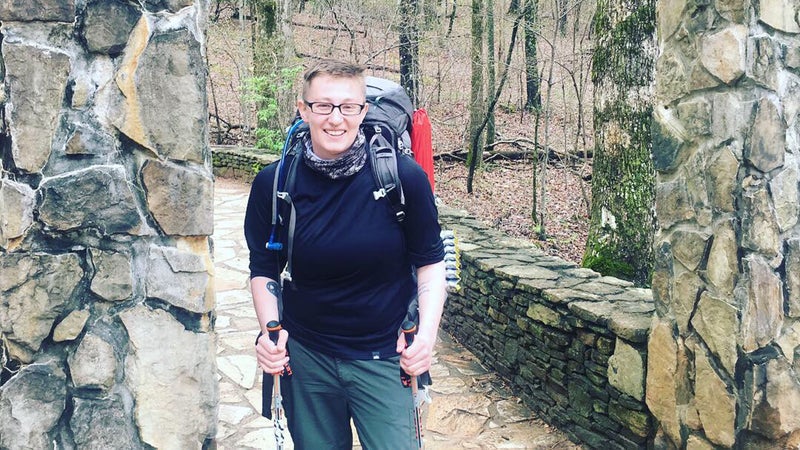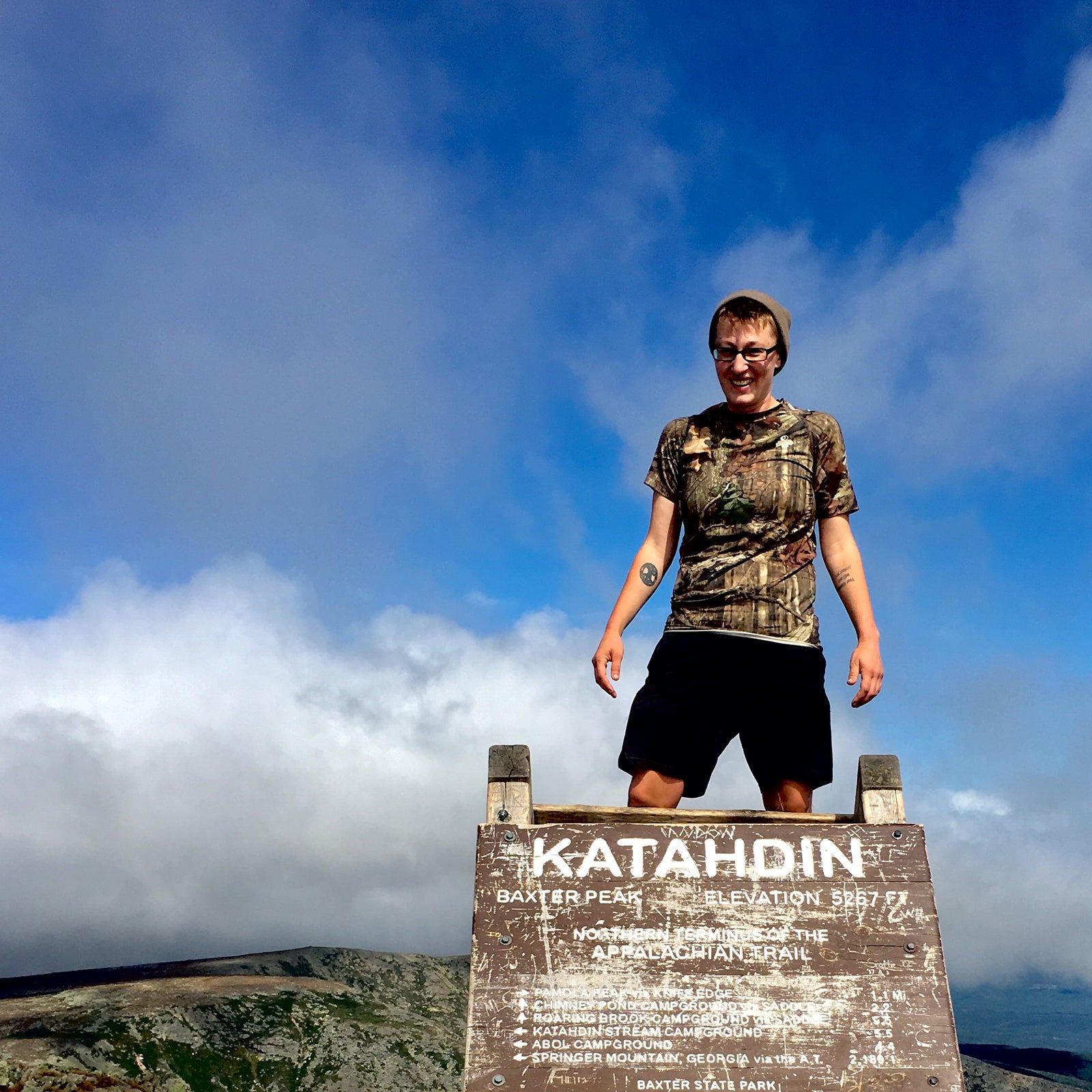When I was ten years old, I read ��and decided I would thru-hike the entire Appalachian Trail��one day. I put that dream on hold��as a teenager��when I learned about the in Shenandoah National Park, an hour from where I grew up in Virginia. It made me feel that being LGBTQ in the outdoors put me at risk—especially as a very visible LGBTQ person.
After a while, I returned to my dream.��I didn’t want to let my fear win.��On September 12, 2019, I completed a northbound thru-hike of��the AT.��I’m infinitely grateful I didn’t let myself give up. But being LGBTQ��made my time on the trail harder.
I am nonbinary and transgender, which for me means I’m not a man or a woman, and prefer that others use the pronouns they, them, and theirs when referring to me.��I am also queer, which in my case��means being attracted to��women and other nonbinary people��but not men. I present as butch and am usually perceived as a lesbian. My specific identity has very much shaped my��life.��
My thru-hiking experience was different from that of cisgender��hikers,��even before I hit the trail. It started with selecting my gear: I wear men’s clothing, but I don’t have what’s generally��assumed to be��man’s body. While prepping for my hike,��I had to choose between gear that made me feel comfortable and gear that fit my body best.��I was terrified about heaping my concerns on some unsuspecting REI employee who wouldn’t necessarily know how to respond. Ultimately, I bought mostly men’s gear and clothing online and asked a friend who works at REI to help me pick out everything else.
I have gender��dysphoria, so my body doesn’t match my��gender identity and that gives me intense discomfort. Usually I wear a binder, which straps my chest down and helps��to��ease those feelings, but I couldn’t do that while hiking because binders can��hurt your back. My hair can also be a source of dysphoria for me, so I usually keep it very short; several times on the AT, I found myself stressed about where I might next find a barber (particularly one that wouldn’t turn me away for not being a man) so my outward presentation would match my identity as much as possible. I had to accept that there would be days on the trail when my��dysphoria would arise��and make me miserable—and to keep hiking through them.
There were still other challenges: throughout my hike, I sensed discomfort from others, although no one said anything outright homophobic to me.��The most common way that it manifested��was��a shocked, terrified, or uneasy look that many people had��when I talked about anything LGBTQ related, or when I referenced myself as being LGBTQ.��As all thru-hikers know, the trail can get very lonely. We rely on other hikers to be supportive and welcoming to relieve our isolation.��When you’re out in the woods with no cell service, it really helps to have people around to ground you and make you feel less alone. But when you can tell that other hikers are uncomfortable with you, the trail feels even lonelier.

Having a nonnormative gender identity and preferring the use of nonstandard pronouns��means that I am often misgendered by people who have just met me. This posed a special on-trail challenge: the AT is a very social environment, yet people fade in and out of your bubble frequently. With each new person I met, I needed to decide whether or not to tell them who I was.
I usually based my decision on whether I thought they would be supportive��and whether I thought I would see them again. Unfortunately, many of the people I decided to tell didn’t make an effort to respect my identity: around half of those��I came out to initially seemed supportive, but then they didn’t follow up by using��correct pronouns or language. (It’s easy to tell the difference between someone who is doing their best��and messes up sometimes��and someone who’s not making an effort.)��But other people did try. One wonderful buddy I hiked with from Georgia through Pennsylvania had never heard of��nonbinary identity before she met me, but she worked harder than anyone I’d ever met to get it right. She was proof that anyone can understand if they care to.
The trail also brought me a lot of joy, especially when I had the opportunity to bond with other queer hikers. A few times, I reached a campsite��or a lunch spot��with only other LGBTQ people, and it felt like everyone��relaxed a little bit. Those rare instances gave us the chance to talk about our lives and our thru-hiking experience without fear of making anyone uncomfortable or having to explain ourselves. It reminded me that although getting to simply exist outdoors is beneficial for everyone, it can be especially important for LGBTQ people. It can be healing for us to just be in the woods,��away from painful societal constraints. The wildlife doesn’t care what your gender is��or who you love. In daily life, we experience constant stress about how we’re perceived and how we’ll be treated. Many of us can’t enter a gender-divided bathroom without��trepidation. In the woods, of course, you can pee wherever you want.��
The Appalachian Trail—and all trails—should ideally feel��supportive��and social for everyone.��To that end, I hope that the outdoors community engages in education and difficult conversations about how to better include LGBTQ people on trails. That’s true for individuals as well as bigger outdoor organizations.��If you want to be a better ally in the outdoors, I encourage you to take some time to research LGBTQ identities as well as issues faced by other marginalized groups. Don’t make assumptions about your fellow outdoorspeople. Ask them about themselves, and be willing to listen. Be sensitive to challenges others might face that you don’t. If we can teach ourselves to be welcoming and accepting on the trail, that’s a step toward being better to each other in everyday life.


